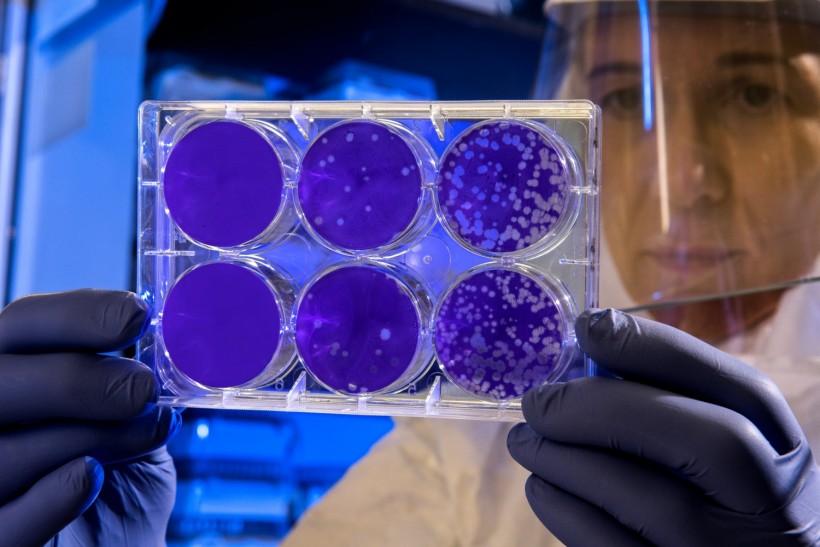Researchers at the University of São Paulo (USP) in São Carlos, Brazil, have discovered a number of bioactive substances in a marine sponge found on Fernando de Noronha. Some substances demonstrated their ability to kill germs that are immune to the antibiotics currently on the market. Fundação de Amparo à Pesquisa do Estado de São Paulo (FAPESP) provided funding for the study, which appeared in the Journal of Natural Products.

A scientist examines the result of a plaque assay.
Drug-Resistant Bacteria Marine Sponge
Agelas dispar, a marine sponge native to the Caribbean and parts of the Brazilian coast, was analyzed in the study. Marine sponges spend their entire lives anchored to reefs or the ocean floor, which some are Earth's oldest organisms. They have evolved a complex metabolism over millions of years. They were able to produce substances required for competition with other invertebrates to avoid pathogenic bacterial infection.
Based on the result, three different types of ageliferin were considered the most therapeutic. Roberto Berlinck, IQSC-USP professor and principal investigator for the study, said that another important factor is the sponge's ability to store symbiont microorganisms that aid them in defending themselves.
According to the study's researcher, Vítor Freire, the marine sponge had been studied previously by groups outside Brazil in the 1990s. He said that next-generation techniques were used in today's study to analyze substances from their secondary metabolism. The new technique would also help them to look for new molecules and test their biological activity. The research allowed them to describe a number of novel compounds. One of the compounds detected was against drug-resistant bacteria.
The World Health Organization views drug-resistant bacteria as a serious global public health issue. The British government reported its severity in its 2016 report. This report predicted that in 2050, there would be 10 million drug-resistant bacterial infection-related fatalities annually.
ALSO READ: Newly invented bacteria eats plastic
Antimicrobial Resistance Drug on Treating Cancer
Thirteen compounds have been tested on the ovarian cancer line OVCAR3. However, the compounds were not biologically active. Other tests were also conducted using the ageliferins on the lung, colon, and breast cancer cells. However, there was no anti-tumor action, while one of the drugs had no response on lymphoma cells.
Yet the three ageliferins were able to eliminate drug-resistant bacteria, such as Escherichia coli and Enterococcus faecalis, Staphylococcus aureus, Klebsiella pneumoniae, Acinetobacter baumannii, and Pseudomonas aeruginosa,
Another purpose of the study was to determine whether the use of the ageliferins could result in hemolysis in the intestines, a potentially fatal side effect frequently observed in chemotherapy patients who require antibiotics. The compounds did not cause damage in murine cells, showing potential and indicating a promising future for medication development.
The next step that the researchers plan is to use the same methodology to investigate other marine sponges.
According to Freire, a postdoctoral researcher at the National Cancer Institute in the United States, finding out how the compounds are created is essential as they are distributed by numerous classes of sponges and could help treat diseases in the future.
RELATED ARTICLES: 20 New Species of Bacteria With Antibiotic-Resistant Genes and May Promote Emergence of Infectious Diseases Discovered in Antarctica
Check out more news and information on Medicine and Health in Science Times.














